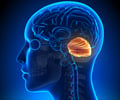
The study was published online ahead of print on November 8, 2012, by the journal Structure.
The new study reveals the structure of a class of enzymes called c-jun-N-terminal kinases (JNK) when bound to three peptides from different protein families; JNK is an important contributor to stress-induced apoptosis (cell death), and several studies in animal models have shown that JNK inhibition protects against neurodegeneration.
"Our findings have long-range implications for drug discovery," said TSRI Professor Philip LoGrasso, who, along with TSRI Associate Professor Kendall Nettles, led the study. "Knowing the structure of JNK bound to these proteins will allow us to make novel substrate competitive inhibitors for this enzyme with even greater specificity and hopefully less toxicity."
The scientists used what they called structure class analysis, looking at groups of structures, which revealed subtle differences not apparent looking at them individually.
"From a structural point of view, these different proteins appear to be very similar, but the biochemistry shows that the results of their binding to JNK were very different," he said.
Advertisement
All three peptides have important effects, LoGrasso said, inducing two distinct inhibitory mechanisms—one where the peptide caused the activation loop to bind directly in the ATP pocket, and another with allosteric control (that is, using a location on the protein other than the active site). Because JNK signaling needs to be tightly controlled, even small changes in it can alter a cell's fate.
Advertisement
Source-Eurekalert












